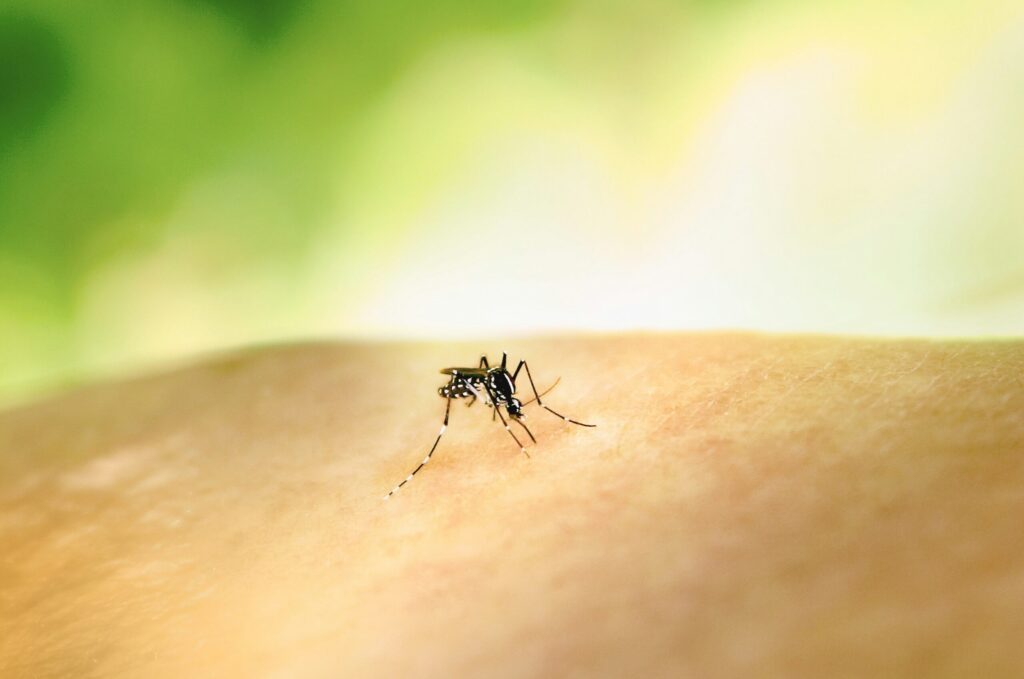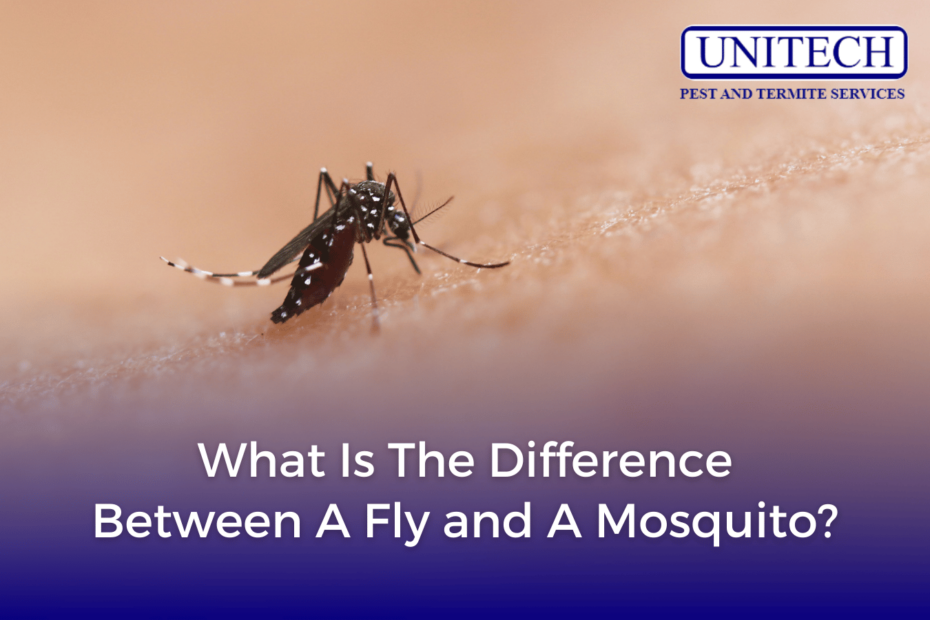Some of the most common insects people come across are flies and mosquitoes. They may seem similar, but in reality, they are quite different from each other. Differences range from differences in physical characteristics to behavior and, more importantly, their impact on day-to-day activities. Understanding the differences they have can help one better cope with them when they begin to annoy. In this post, we have taken a crucial look at flies and mosquitoes based on their physical characteristics, habits, and the way they affect us.

Physical Differences
Size and Shape
Flies and mosquitoes differ significantly in size and shape. Flies are generally larger, with some species reaching up to half an inch long, featuring a robust and stout body. In contrast, mosquitoes are slender and delicate, with long legs and a narrow body. Their size typically ranges from one-sixteenth to half an inch, depending on the species.
Wings and Legs
Flies and mosquitoes have different wings and legs. Flies possess two broad wings that often overlap at rest, with shorter, thicker legs designed for quick landings and takeoffs. In contrast, mosquitoes have two long, narrow wings held parallel to their body when not flying, and their long, thin legs help them land softly on surfaces.
Behavior and Habits
Feeding Habits
Flies and mosquitoes have distinct feeding habits. Flies are scavengers that feed on decaying matter, waste, and food residues, using sponge-like mouthparts to lap up liquids. In contrast, mosquitoes feed on the blood of animals and humans with a specialized mouthpart called a proboscis to pierce the skin and extract blood. Only female mosquitoes bite humans, as they need blood to lay eggs.
Breeding Grounds
The breeding habits of flies and mosquitoes distinguish them from each other. Flies lay their eggs in decaying organic matter like garbage, animal feces, or dead animals, providing ample food for their larvae. Mosquitoes prefer to lay their eggs in or near water, where their larvae, called wigglers, develop in standing water such as ponds, marshes, or containers that collect rainwater.
Impact on Humans
Health Concerns
Mosquitoes are notorious for spreading diseases, transmitting viruses like malaria, dengue, Zika, and West Nile virus through their bites. This makes them a major health concern in many regions. Flies, while not biting humans, also pose health risks by carrying bacteria and pathogens from decaying matter, which they can transfer to food or surfaces, potentially causing illness.
Annoyance Factor
Flies and mosquitoes can be bothersome, but in different ways. Mosquitoes leave itchy bites that last for days, making outdoor activities uncomfortable, and their high-pitched buzzing is particularly annoying at night. Flies are a nuisance due to their constant buzzing and habit of landing on food and surfaces, making them unwelcome in kitchens and dining areas.
Distinguishing Pests: Strategies for Effective Management and Health Protection
Flies and mosquitoes have distinct differences that affect how we perceive and deal with them. From their physical characteristics to their behavior and impact on human health, understanding these differences can help us manage their presence more effectively, especially when it comes to mosquito control. While both can be bothersome, knowing what sets them apart can guide us in finding the best ways to protect our health and maintain comfortable environments.
For effective mosquito control in St. Louis, trust Unitech Pest to safeguard your health and comfort. Contact us today to reclaim peace from pesky mosquitoes and flies. Let’s make your environment comfortable again!


